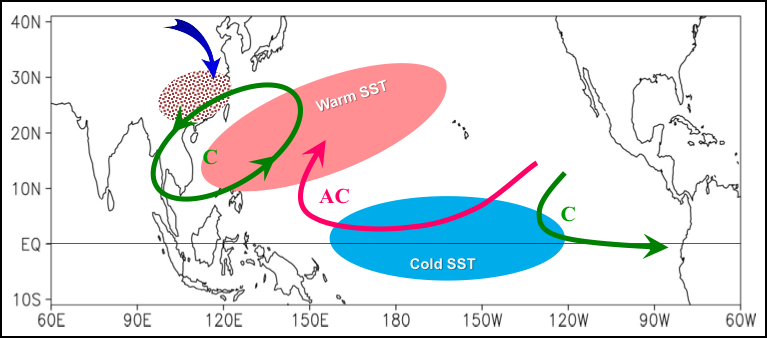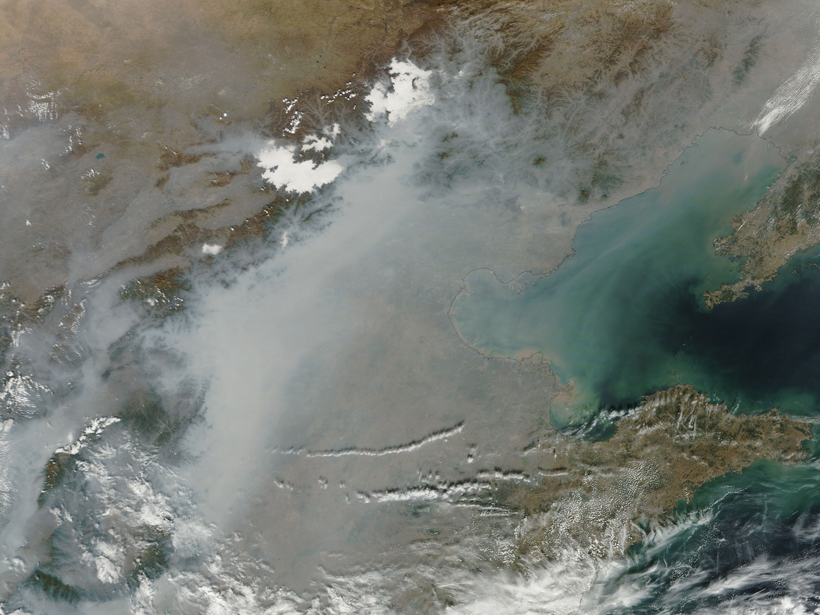Source: Journal of Geophysical Research: Atmospheres
Tiny particles known as aerosols pepper the atmosphere worldwide. Some aerosols are natural, including windblown dust and sea salt, whereas others consist of pollution produced by human activities, such as wood fires. Aerosols have complex effects and can influence climate, atmospheric visibility, environmental pollution, and human health.
On a regional scale, weather can affect aerosol concentrations, sometimes with major implications for air quality. This is of particular interest for certain regions in eastern China, where aerosols are a serious environmental problem. A new study by Feng et al. suggests that depending on its strength, a recently identified type of La Niña known as La Niña Modoki could have very different effects on aerosol concentrations over eastern China.
During La Niña Modoki, the cool sea surface temperature anomalies that characterize La Niña occur farther west in the Pacific than usual. However, debate is ongoing over whether La Niña Modoki is truly different from the canonical La Niña. Nonetheless, events that fit the La Niña Modoki profile may have unique regional effects.
To examine the effects of La Niña Modoki on aerosols, the team investigated two such events in the past 2 decades, one occurring in 1998–1999 and one in 2000–2001. The team used a model of atmospheric composition known as GEOS-Chem to explore the influence that each event may have had on aerosol concentrations over eastern China. Their methods followed those used in their previous analysis for El Niño Modoki, a similarly nontraditional event.

The results suggest that at its peak, the strong La Niña Modoki of 1998–1999 resulted in increased aerosol concentrations in the south and decreased aerosols in the north. In contrast, the moderate 2000–2001 event had the opposite effect: It decreased aerosols in the south while increasing them in the north. The analysis also revealed additional contrasts in regional aerosol levels over the course of each event.
The different effects on aerosols would likely have been caused by different wind circulation patterns that occurred during each event. The researchers calculated that the two events may have increased or decreased aerosol concentrations by up to 20% of mean levels. Therefore, they say, the effects of La Niña Modoki cannot be ignored, and the influences of air-sea interactions in the tropical Pacific should be considered in haze forecasts. (Journal of Geophysical Research: Atmospheres, https://doi.org/ 10.1002/2016JD026175, 2017)
—Sarah Stanley, Freelance Writer
Citation:
Stanley, S. (2017), La Niña subtype may have a big impact on aerosols in China, Eos, 98, https://doi.org/10.1029/2017EO071511. Published on 19 April 2017.
Text © 2017. The authors. CC BY-NC-ND 3.0
Except where otherwise noted, images are subject to copyright. Any reuse without express permission from the copyright owner is prohibited.

